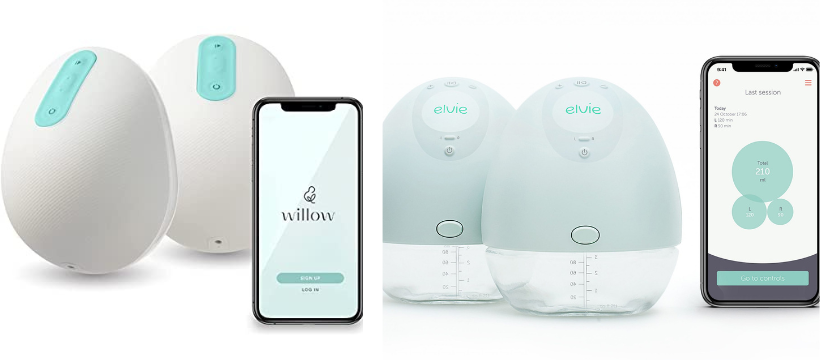Does your breastmilk taste or smell fishy or soapy? First and foremost, we need to find out the why behind your breastmilk having a funny smell or taste. It can be a storage issue, lipase issue, or even a pump parts/cleaning issue!
Pump Parts/Storage Possibilities:
The first thing you should do if your breastmilk tastes or smells funny is to make sure you are following all CDC and manufacturers recommendations for pumping & storing breastmilk as well as cleaning/sterilizing parts. Most of the time, washing all pump parts in hot soapy water and air drying after each use is your best option. If your baby is preterm or sick, you may also need to sterilize your parts frequently. The CDC is a great resource for thorough cleaning instructions https://www.cdc.gov/hygiene/pdf/breastpumpkit-clean-508.pdf
If a sink/water is not readily available, you can use breast pump wipes after a pump session until you can thoroughly wash all parts. Use storage containers that are specifically designed for storage of human milk. See attached guidelines for best storage practices for breastmilk.
Is it a Lipase Issue?
Some mothers have excess lipase activity in their breastmilk. This can be especially true sometimes if you have high milk supply. Lipases are just normal enzymes found in the milk that help your baby digest the breastmilk. Don’t worry, there is nothing wrong with your milk and you CAN still give it to your baby! However, if there is an excess lipase activity in the milk, it can result in a fishy or soapy odor due to it breaking down the fats found within it. This can cause some babies to refuse to drink the milk that has been expressed. The rate at which this process occurs can vary widely from person to person. For some, it is as soon as 4-12 hours after expressing milk, and for others it can take days. Even if your milk has a fishy or soapy smell, it is still safe and beneficial to give to your baby. If your baby is refusing it, you can try a few things to help:
- Mix half and half with freshly expressed milk
- Add 1 drop of alcohol free vanilla to each bottle of breastmilk
- Scald the milk (more on this below)
Scalding Your Milk
Scalding the milk (heating to 180 degrees-when it is just before the boiling point-or bubbling around the edges) will deactivate the lipase activity and restore normal smell and taste. Scalding is best done to fresh milk (not frozen), but you can also scald frozen milk if it is brought to room temperature first and fed to baby within 24 hours.
If you want to prevent the fishy/soapy taste or smell in the first place, you can scald your fresh milk before placing it into the refrigerator/freezer.
Steps to Scald Your Milk:
- Place breastmilk in a clean pan over low/medium heat on the stove.
- Heat the milk just until it is bubbling around the edges (or 180 degrees).
- Quickly remove from heat and place the pan in a bowl of ice water to cool it down.
- Store the milk in appropriate breastmilk safe storage bags.
Is It Worth The Work?
Absolutely! Your body makes milk specifically designed to meet your particular baby’s needs and adapts according to what your baby has been exposed to or what they require in that moment. This and many other factors make it far superior to other milk. The World Health Organization states “Breastmilk is the ideal food for infants. It is safe, clean and contains antibodies which help protect against many common childhood illnesses. Breastmilk provides all the energy and nutrients that the infant needs for the first months of life, and it continues to provide up to half or more of a child’s nutritional needs during the second half of the first year, and up to one third during the second year of life”.
Need Breastfeeding Help?
For professional support and advice, visit
Rachel Baggett, RN, BSN, IBCLC, is a professional lactation consultant who is dedicated to gently helping mothers and babies thrive in their breastfeeding journey.

